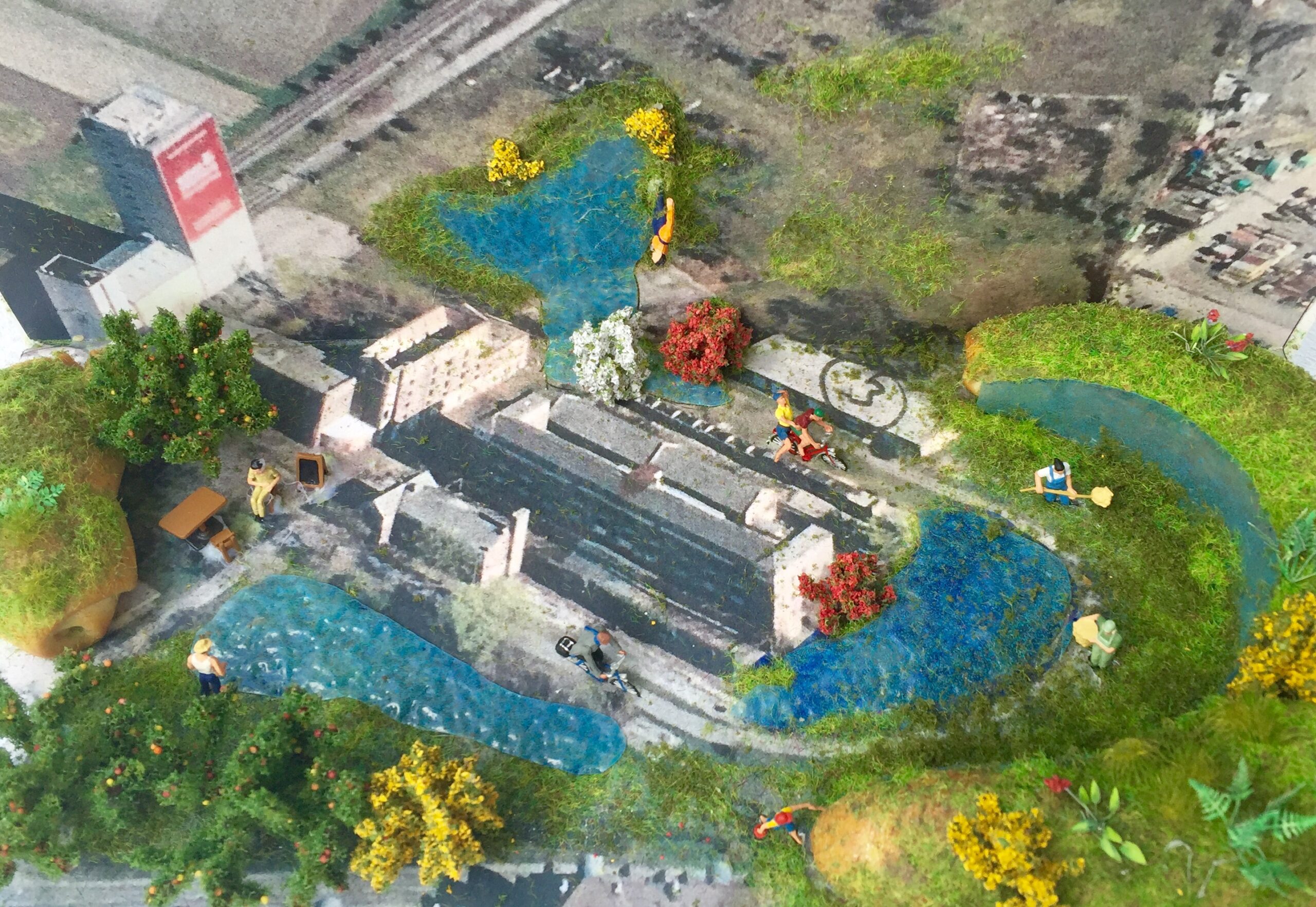From loaf of bread to living lab – under this working title, CMb.industries has developed a utilization concept for the former hammer bread works in Lower Austria and carried out corresponding lobbying work in the political environment.
Concept – cradle and goods
The approximately 4.8-hectare site of the former Hammerbrotwerke is to be developed in dialog with the city of Schwechat. The aim of this development is to create a district with its own identity and appeal. A place that impresses with its broad spectrum of possible uses, high-quality architectural solutions and its unique listed old buildings in combination with its green spaces. The new urban quarter, a so-called LIVING LAB, will be socially and functionally mixed, architecturally sophisticated and true to scale, as well as climate-friendly and largely barrier-free. The concept is based on a public debate with local citizen participation. This is where people live, work and spend their leisure time – in short: live! This new urban quarter is networked with the metropolitan region in many ways. It is perfectly densified and equipped with open spaces. It has central facilities that radiate positively into the neighborhood
.
The aim is to avoid a monoculture in the development of the area. Instead, the plan is to create a framework for an interacting environment, a diverse community. A framework that allows for a variety of uses including offices, production, crafts, retail, gastronomy, residential, science and research as well as art and culture, thereby generating added value for society and the community as a whole. This diversity makes the project robust and capable of adapting to changing requirements.
A head start through dedication
Within the project area, the aim is to achieve a moderate level of new development. The location and scale of the new development are still to be developed in terms of urban planning. On the one hand, housing represents an important factor in the systemic relationship between ecology and economy (i.e.: short distances between new forms of working and living), on the other hand, apartments and stylish apartments with an international loft character make it possible to achieve the high-quality, cost-intensive refurbishment of the old building stock, which is in keeping with its listed status. The development of the project, which halts the decay of the brick jewel and can afford the cost-intensive, monument-appropriate and high-quality renovation, requires a rezoning from the current “building land industrial area” to “building land residential area”.
Schwechat is right
Thanks to clever, contemporary zoning, the city of Schwechat can count itself among the international pioneers if, like Berlin (where a new zoning category entitled “Urban Quarter” is being considered), it rethinks the principle of separation between living and working that has been firmly anchored in urban land-use planning to date, thereby taking account of social developments. This is because many of the reasons for limiting density and mixed use have now become obsolete. Compact urban structures are needed for economic and ecological reasons. And practitioners would be pleased to see new possibilities being tested and would appreciate the foresight.







